Use Your Instincts
Alcohol
| Stay clever |
|
| Guard yourself |
|
| Protect yourself |
|
|
| Spot the truth |
|
| References |
|
Cannabis
| Stay sharp |
|
|
| Join the pack |
|
| Protect yourself |
|
| Be wise |
|
| References |
|
1. Government of Canada. Is cannabis safe to use? Facts for youth aged 13-17 years; 2018. Available from: https://www.canada.ca/en/health-canada/services/publications/drugs-health-products/is-cannabis-safe-use-facts-youth.html 2. Canadian Centre on Substance Use and Addiction. Clearing the smoke on cannabis: Regular use and cognitive functioning; 2019. Available from: https://www.ccsa.ca/sites/default/files/2019-09/CCSA-Cannabis-Use-Cognitive-Effects-Report-2019-en.pdf 3. George, T. & Vaccarino, F. Substance abuse in Canada: The effects of cannabis use during adolescence. Ottawa, ON: Canadian Centre on Substance Use and Addiction; 2015. Available from: https://ccsa.ca/sites/default/files/2019-04/CCSA-Effects-of-Cannabis-Use-during-Adolescence-Report-2015-en.pdf 4. Boak, A., Hamilton, H. A., Adlaf, E. M., & Mann, R. E. (2017). Drug use among Ontario students, 1977-2017: Detailed findings from the Ontario Student Drug Use and Health Survey (OSDUHS). Toronto, ON: Centre for Addiction and Mental Health. Available from: https://camh.ca/en/science-and-research/institutes-and-centres/institute-for-mental-health-policy-research/ontario-student-drug-use-and-health-survey—osduhs 5. Canadian Institute for Substance Use Research. Cannabis use and youth; 2018. Available from: https://youthrex.com/wp-content/uploads/2019/04/Here-to-Help-Cannabis-Use-and-Youth.pdf 6. Government of Canada. Health effects of cannabis; 2017. Available from: https://www.canada.ca/content/dam/hc-sc/documents/services/campaigns/27-16-1808-Factsheet-Health-Effects-eng-web.pdf 7. Government of Canada. Does cannabis use increase the risk of developing psychosis or schizophrenia; 2018. Available from: https://www.canada.ca/content/dam/hc-sc/documents/services/publications/drugs-health-products/does-cannabis-use-increase-risk-developing-psychosis-schizophrenia/does-cannabis-use-increase-risk-developing-psychosis-schizophrenia-eng.pdf 8. Canadian Centre on Substance Use and Addiction. Clearing the smoke on cannabis: Regular use and mental health; 2019. Available from: https://ccsa.ca/sites/default/files/2019-08/CCSA-Cannabis-Use-Mental-Health-Report-2019-en_0.pdf 9. Centre for Addiction and Mental Health. The blunt truth: Useful tips about safer ways to use cannabis; 2018. Available from: https://www.camh.ca/-/media/images/all-other-images/research-lrcug-for-youth/lrcug_for_youth-eng-pdf.pdf?la=en&hash=15D9E4FBB8DBA73B665C3267E64FE233F937A298 |
Vaping
| Be clever |
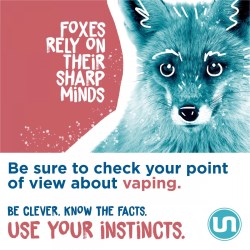 The aerosol from vaping products is not just harmless water. Although vapes may seem less harmful than cigarettes they are not without health risks.1 The aerosol from vaping products is not just harmless water. Although vapes may seem less harmful than cigarettes they are not without health risks.1 |
| Resist the trap |
|
|
| Protect yourself |
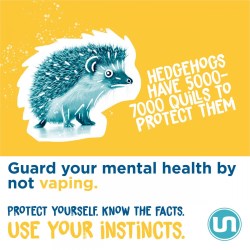 The industry would lead you to believe that vaping helps you relax. However, a recent study of more than 96,000 people found that vapers were 2x as likely to suffer from depression, anxiety and other emotional problems.3 The industry would lead you to believe that vaping helps you relax. However, a recent study of more than 96,000 people found that vapers were 2x as likely to suffer from depression, anxiety and other emotional problems.3 |
| See the light |
|
| Same tactics, new product |
|
Lots of flavours! Cool gear! There’s a reason why tobacco giant Altria Group, the owners of Philip Morris USA and makers of Marlboro cigarettes bought a 35% stake in Juul Labs.7 Most recently, an Altria senior exec also took over as Juul CEO. 8 Getting into the heated nicotine business not only gives Big Tobacco a new billion-dollar income stream but is also a way for them to become relevant again.9 |
| Spot the myths |
|
Nic salts help the industry because they make vaping easier for users to inhale than the original freebase nicotine and less harsh on the throat. This allows users to inhale higher amounts of nicotine per puff; hooking them faster and longer. Using nicotine before the age of 25 has a lasting impact on our brain, affecting memory, attention, and the ability to control our actions and impulses.10 |
|
Be schooled |
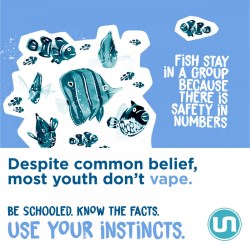 Although vaping in youth is on the rise, a large recent study shows that 85% of Canadian teens are not vaping. The rates have increased from 8.4% to 14.6% from 2017 to 2018, but this still means 85% of Canadian teens report they are not vaping. 11 Although vaping in youth is on the rise, a large recent study shows that 85% of Canadian teens are not vaping. The rates have increased from 8.4% to 14.6% from 2017 to 2018, but this still means 85% of Canadian teens report they are not vaping. 11 |
| References |
|
[1] Ontario Agency for Health Protection and Promotion (Public Health Ontario). Current evidence on e-cigarettes: a summary of potential impacts. Toronto Ontario. Queen’s Printer of Ontario. 2018, Nov. Available from https://www.publichealthontario.ca/-/media/documents/literature-review-ecigarettes.pdf?la=en [2] Mortiz, T. Vaping it’s all smoke and mirrors. United States of America: The America Lung Association; 2018. Retrieved from https://www.lung.org/about-us/blog/2019/03/vaping-smoke-and-mirrors.html [3] Napoli, N. . E-Cigarettes linked to heart attacks, coronary artery disease, and depression. Washington, D.C: American College of Cardiology; 2019 Mar 7. Available from https://www.acc.org/about-acc/press-releases/2019/03/07/10/03/ecigarettes-linked-to-heart-attacks-coronary-artery-disease-and-depression [4] Centre for Disease Control. Quick facts on the risks of e-cigarettes for kids, teens, and young adults. Atlanta, GA. US Department of Health and Human Services, CDC; 2019 Mar 11. Available from https://www.cdc.gov/tobacco/e-cigarettes/youth.html?CDC_AAref_Val=https://www.cdc.gov/tobacco/basic_information/e-cigarettes/Quick-Facts-on-the-Risks-of-E-cigarettes-for-Kids-Teens-and-Young-Adults.html [5] LaVito, A. Maker of popular Juul e-cigarette says it wants to help stop teens from using its products. CNBC {Internet}. 2018 Apr 25 [ cited Jan 7, 2020]; Woodstock and Region. Available from https://www.cnbc.com/2018/04/25/juul-says-it-wants-to-help-stop-teens-from-using-its-e-cigarettes.html [6] Kaplan, S. Richtel, M. Juul illegally marketed e-cigarettes, F.D.A says. New York Times [Internet]. 2019 Sept 9 [cited 2019 Oct 8]. Woodstock and Region. Available from https://www.nytimes.com/2019/09/09/health/vaping-juul-e-cigarettes-fda.html [7] Maloney, J. Juul hires another top Altria executive. Wall Street Journal [internet]. 2019 Oct 1 [cited 2019 Oct 8); Woodstock and Region. Available from https://www.wsj.com/articles/juul-hires-another-top-altria-executive-11569971306 [8] Maloney, J. (2019, October 1). Juul Hires Another Top Altria Executive. Wallstreet Journal. Retrieved from https://www.wsj.com/articles/juul-hires-another-top-altria-executive-11569971306 [9] Zaleski, O., & Kary, T. Altria invests $12.8 Billion in e-cigarette maker Juul. Bloomberg [Internet]. 2018 Dec 20 [cited 2019 Oct 9]; Woodstock and Region. Available from https://www.bloomberg.com/news/articles/2018-12-20/altria-invests-12-8-billion-in-e-cigarette-maker-juul-labs [10] Goriounova N, Mansvelder H. Short- and long-term consequences of nicotine exposure during adolescence for prefrontal cortex neuronal network function. Cold Spring Harb Perspect Med. 2012;2(12):a012120. [11] Hammond, D., Reid, J. L., Rynard, V. L., Fong, G. T., Cummings, K. M., McNeill, A., … & O’Connor, R. Prevalence of vaping and smoking among adolescents in Canada, England, and the United States: repeat national cross-sectional surveys. Bmj; 365, l2219. Available from https://kclpure.kcl.ac.uk/portal/en/publications/prevalence-of-vaping-and-smoking-among-adolescents-in-canada-england-and-the-united-states(ad6c4526-542c-492f-a074-2df31da92eaa).html |
Download posters
- Use Your Instincts - Alcohol Posters
- Use Your Instincts - Cannabis Posters
- Use Your Instincts - Vaping Posters
Adapted from a publication produced by the City of Hamilton Public Health Services. Distributed by Southwestern Public Health.












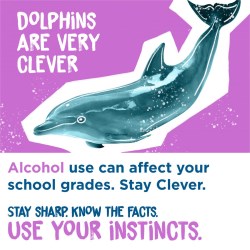 Your brain is still developing until age 25 and drinking can impact areas of the brain that help with attention, planning and making decisions, processing emotions, and controlling impulses.
Your brain is still developing until age 25 and drinking can impact areas of the brain that help with attention, planning and making decisions, processing emotions, and controlling impulses. 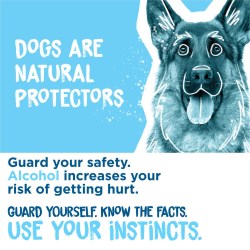 Alcohol also impacts decision making, which can lead to us making decisions
Alcohol also impacts decision making, which can lead to us making decisions 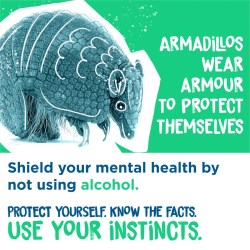 Alcohol can have impact your mental health. Because alcohol is a depressant, it slows your body down and changes the chemical makeup in your brain. This has many effects. It can alter:
Alcohol can have impact your mental health. Because alcohol is a depressant, it slows your body down and changes the chemical makeup in your brain. This has many effects. It can alter: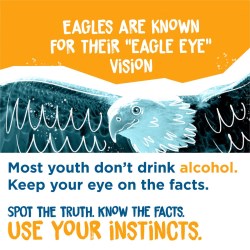 Sometimes it may seem like everyone around you is drinking, but most youth in Ontario don’t drink alcohol.
Sometimes it may seem like everyone around you is drinking, but most youth in Ontario don’t drink alcohol. 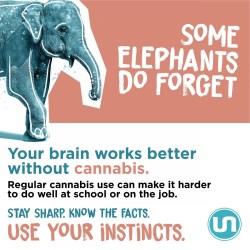 Using cannabis before the age of 25 is associated with negative changes to the developing brain’s structure and function. 1,2,3 This is because the brain continues to develop until your mid-twenties.
Using cannabis before the age of 25 is associated with negative changes to the developing brain’s structure and function. 1,2,3 This is because the brain continues to develop until your mid-twenties.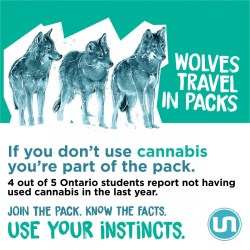 Even if it seems like everyone around you is using, remember, the majority of youth
Even if it seems like everyone around you is using, remember, the majority of youth 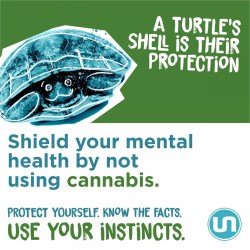 Cannabis affects mental health. Cannabis can increase risk of psychosis or schizophrenia (difficulties understanding what is real and what is not), especially when there is a family or personal history of mental illness. 1,2,7,8
Cannabis affects mental health. Cannabis can increase risk of psychosis or schizophrenia (difficulties understanding what is real and what is not), especially when there is a family or personal history of mental illness. 1,2,7,8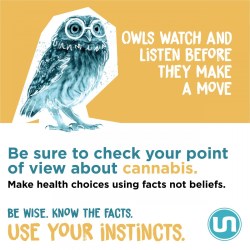 Be sure to check your point of view about cannabis and make choices using facts found on reputable websites.
Be sure to check your point of view about cannabis and make choices using facts found on reputable websites. The aerosol from vaping products is not just harmless water; it contains chemicals that can lead to:
The aerosol from vaping products is not just harmless water; it contains chemicals that can lead to: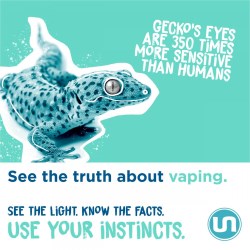 The e-cigarette aerosol that users breathe from the device and exhale can contain harmful and potentially harmful substances, including:
The e-cigarette aerosol that users breathe from the device and exhale can contain harmful and potentially harmful substances, including:
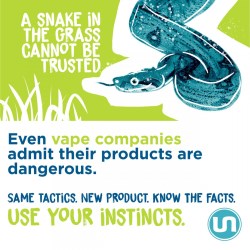 Vape companies admit their products are dangerous for youth5 yet they target youth using fun
Vape companies admit their products are dangerous for youth5 yet they target youth using fun 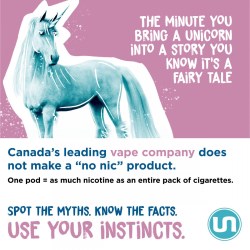 Canada’s leading vape company does not make a
Canada’s leading vape company does not make a